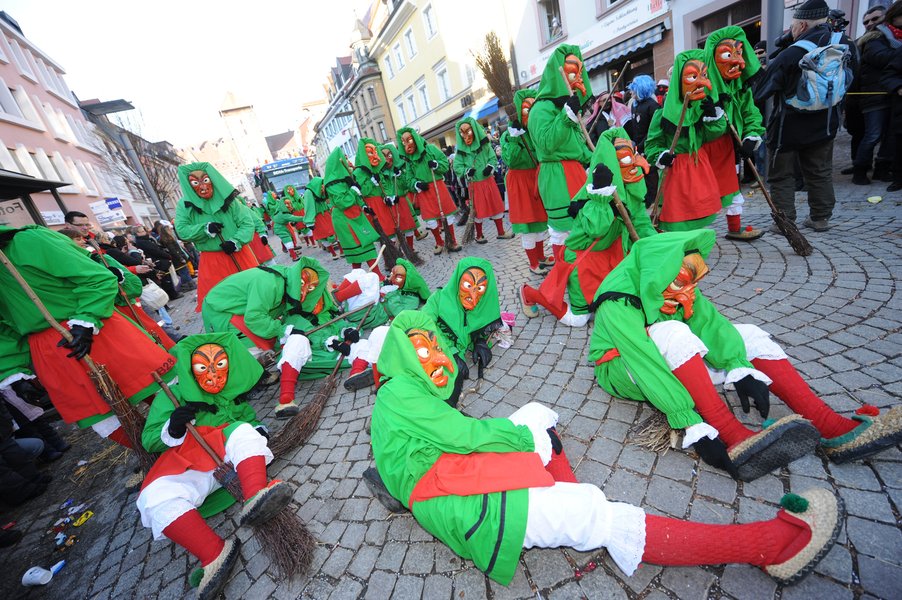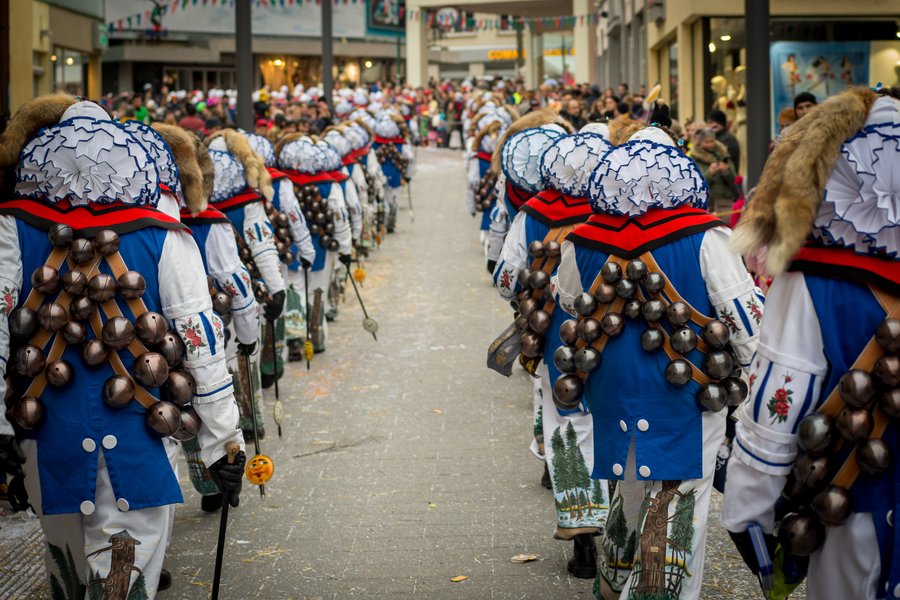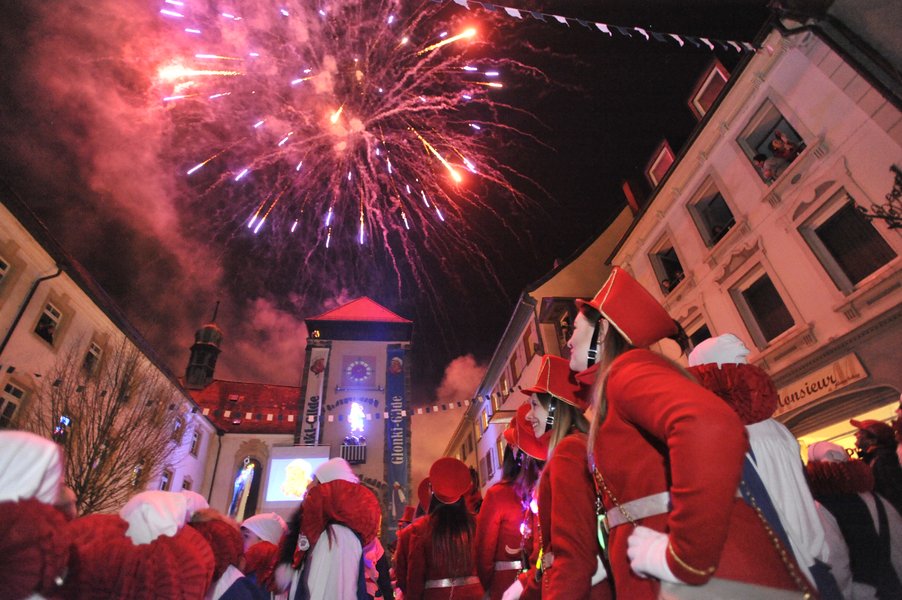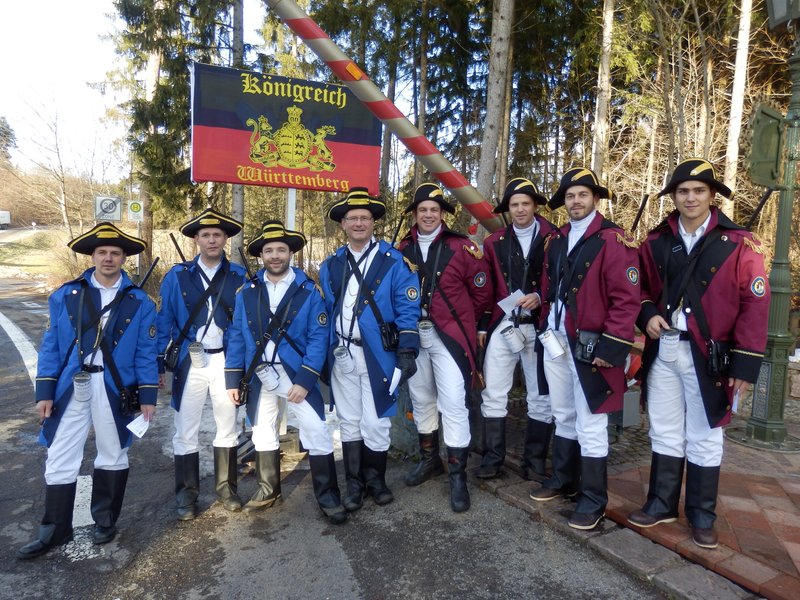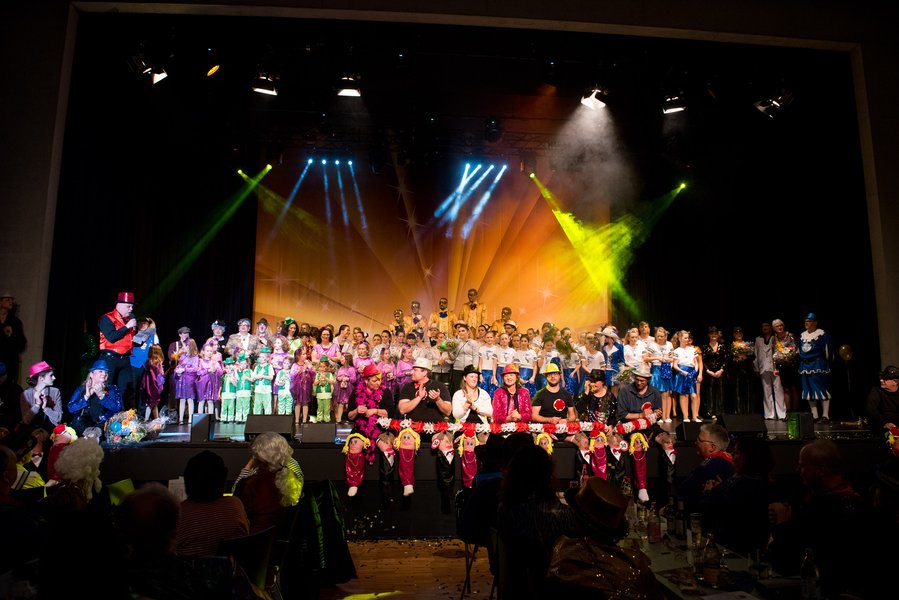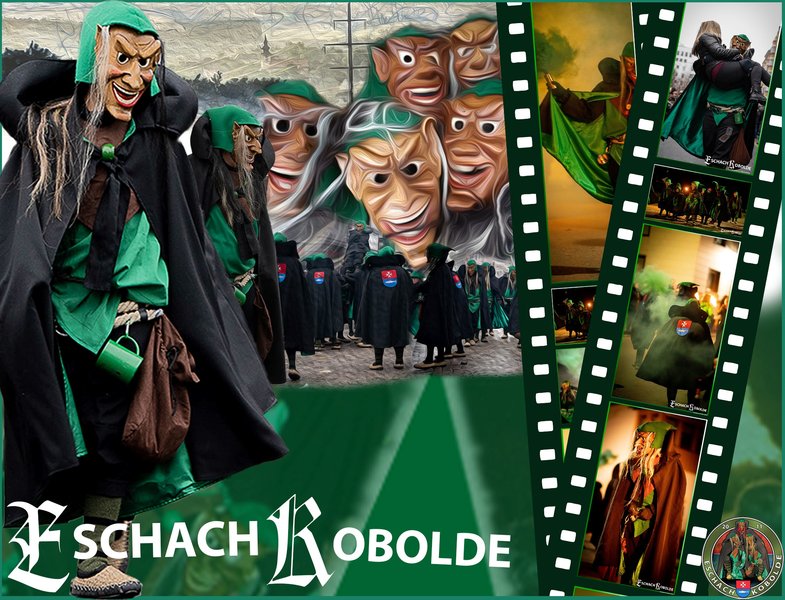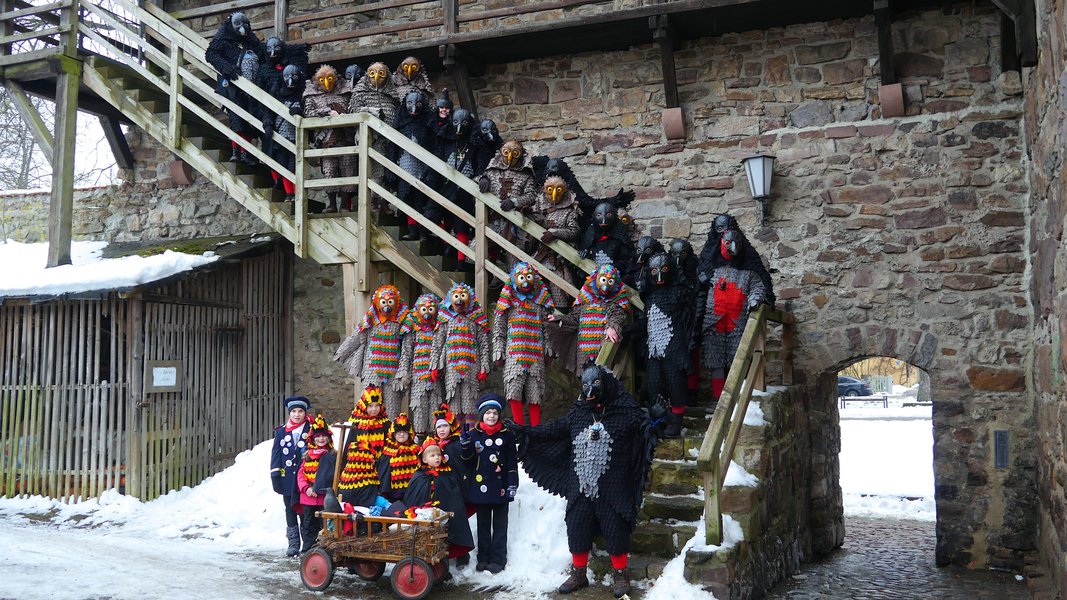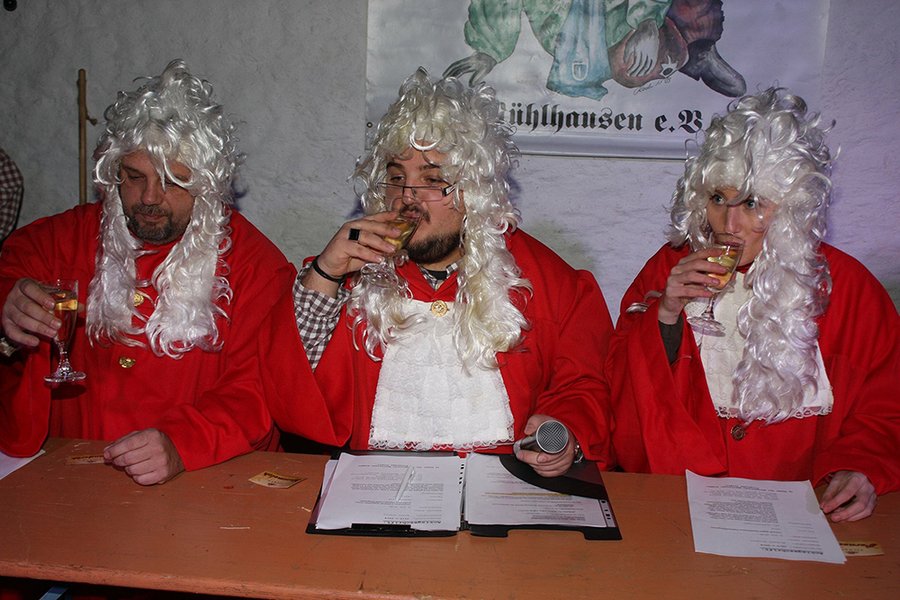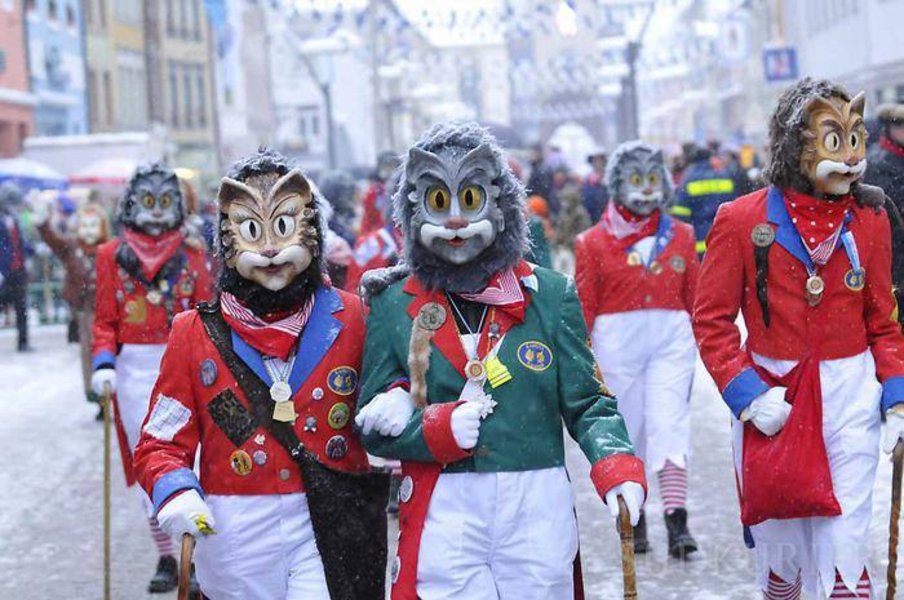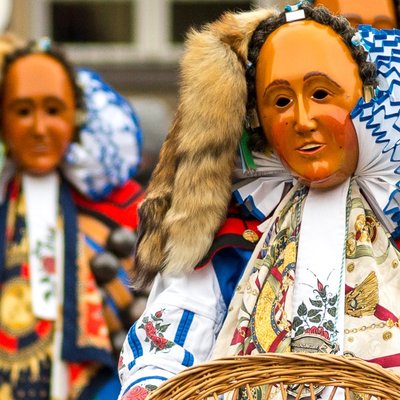
Fasnet and customs
Narri-Narro! This is the 'Narren chant' that everyone hears most in Villingen-Schwenningen.
In the fifth season, normal everyday life comes to a standstill from Dirty Thursday to Fasnet Tuesday.
In Villingen-Schwenningen the anticipation of the Fasnet begins on Epiphany Day, 6 January, with the dusting of the masks ('Schemen'). The Fasnet balls are prepared and everyone gets in the mood for the parades. When the colourful flags are hung up along the parade routes, the atmosphere in the 'Städtle' becomes increasingly cheerful and exuberant.
What is Fasnet?
Celebrated for many centuries, Fasnet is an important part of the political and cultural history of the city. Since the 15th century Villingen chronicles have recorded the wearing of disguises and masks. The Fasnet prohibition actually valid in the reformed Württemberg was never completely kept in Schwenningen. In 1712 two Schwenningen residensts borrowed 'perfect Naren costumes'in Villingen: they wore - like today – wooden masks on their faces, bells, a wooden sabre and a foxtail.
Fasnet dates
Swabian-Alemannic Fasnet
During the Swabian-Alemannic Fsanet there is a wide range of different characters - from very old ones like the Narro to new inventions like the numerous witches. But every year the Narros wear the same 'Häs', as the costume is called here, in contrast to the costume in carnival and fancy dress. With their masks, called 'Schemen', which are mostly carved out of (lime) wood in Villingen-Schwenningen, the parade participants remain anonymous. This is essential for one of the most important parts of the carnival tradition: The parade participants like to look for familiar faces at the roadside to raise them unrecognised with a little joke (to 'strirr'). These characteristics have also contributed to the fact that the Swabian-Alemannic Fasnet was included in the nationwide list of the immaterial cultural heritage of UNESCO in December 2014.

Der Narro in Villingen ist einzigartig. Mit seinem farbenfrohen Mash und Foulard leuchten die unterschiedlichsten Farbkombinationen auf den Verkleidungen.
- Bauchenberg-Hexen Schwenningen e. V.:
Bauchenberg - Hexen - Brigachblätzle 1978 e. V.:
Brigach - Blätzle - Butterfasshexen Schwenningen e. V.:
Butter - Hex, Butter - Hex, Butter - Hex, Hex, Hex - de Rietvogel e. V.:
Krah - Krah - Epfelschittler Willerschbach e. V. 1995:
Epfel - Schittler - Flammenteufel Schwenningen e. V.:
Flammen - Teufel - Fleck-Fleck e. V.:
Fleck Fleck - Fleck Fleck - Gägsnasen Villingen e. V.:
Gägs - Nas - Gayser-Gilde Obereschach e. V.:
Gayser - Knochä - Glaserzunft Herzogenweiler e. V.:
Glas - Scherbe - Glonki-Gilde Villingen e. V.:
Rhabarber - Ahoi - Gockel-Gilde Zollhaus 1955 e. V.:
Kikeriki - Kikeriki - Halden-Zunft Mühlhausen e. V.:
Halden - Hui - Heringsdörfler e. V.:
Heia Heia - Hering - Hexengilde Sauerwasen e. V. Schwenningen:
Hexen - Juhuiii - Hexenzunft Villingen e. V.:
Hex Hex - Huiii - Historische Narrozunft Villingen 1584 e. V.:
Narri - Narro - Katzenmusik Verein 'Miau' 1872 Villingen e. V.:
Miau - Miau - Lohwaldteufel Villingen:
Lohwald - Teufel - Meckergilde e. V. Villingen 1965:
Meckergilde, Meckergilde - Mäh, Mäh, Mäh - Moor-Teufel e. V. Schwenningen:
Moor - Teufel - Narrenzunft Schwenningen e. V.:
Narri - Narro - Narrenzunft Weigheim e. V.:
Narri - Narro, Wolfs - Blut - Neckar-Fleckle Schwenningen e. V.:
Neckar - Fleckle - Osemalizunft Tannheim e. V.:
Ose - Mali - Schanzel-Zunft e. V. Villingen 1978:
Schanzel - Hoo - Schindel-Hansel-Zunft Villingen e. V.:
Schindel - Hansel, Schind - Luader, Schind - Märre - Schwenninger Bären e. V.:
Schwenninger - Bären - Südstadt-Clowns e. V. VS-Villingen 1973:
Heidi - Heida - Talbachhexen VS-Marbach e. V.:
Talbach - Hexen - Villinger Fazenedle e. V.:
Fazenedle, Fazenedle - Schnupf, Schnupf, Schnupf - Villinger Schalmeien e. V.:
Schal - Mei - Urzeit Elche Schwenningen a. N.:
Urzeit - Elche - Warenbachhexen e. V.:
Warenbach - Hexen - Wolfbach Rolli Pfaffenweiler e. V.:
Wolfbach Rolli - Miau - Ziegel-Buben Schwenningen e. V.:
Ziegel - Buben
You will find all information collected in our
brochure fasnet moments (PDF, 3,6 MB)
